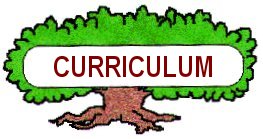

Home Page |
MICHIGAN FORESTS FOREVER TEACHERS GUIDE
| FOREST COMMUNITIES |  |
TREES THAT COMMONLY GROW TOGETHER IN COMMUNITIES
Knowing which tree species usually grow with each other often helps to identify trees you might not know. if you know one or two tree species, you will be able to more easily guess what others might be found in the area. Some of the more common forester “associations” are listed here. Once you become good at knowing forest associations, try learning shrubs, flowers, and other plants that commonly occur in the communities.
Northern Hardwoods
The most common forest community in the U.P. Common tree species include sugar maple, basswood, beech, yellow birch, and ironwood. White pine, hemlock, and white ash are less common but can often be found mixed with northern hardwoods.
Pine & Upland Conifer Communities
Jack pine often grows in nearly pure stands. Red pine and white pine occur in more mixed stands, including species such as red maple, paper birch, and aspen. White pine probably grows in more communities than other pines. Balsam fir and white spruce often grow together on upland sites, many times in transition zones between hardwood uplands and swamps.
Swamp Hardwoods
Swamps are forested wetlands. Common tree species are black ash, American elm, and balm-of-Gilead. Balm usually grows more by itself and look a lot like aspen. Along rivers, cottonwood, silver maple, and boxelder may grow.
Conifer Bog / Swamp Conifer Community
Northern white cedar, tamarack, and black spruce dominate these forest associations. Sometimes tree species such as balsam fir, white spruce, paper birch, and black ash can be found.
Aspen / Mixed Hardwoods
Quaking and bigtooth aspen generally form fairly pure stands. However, depending on the location, other tree species such as balsam fir, white spruce, paper birch, black cherry, oak, red maple, and others may grow.
 |
This website was developed and created by Michigan State University Extension for the teachers of the State of Michigan. |
Page Name:
Curriculum/SupportDocs/Communities.htm